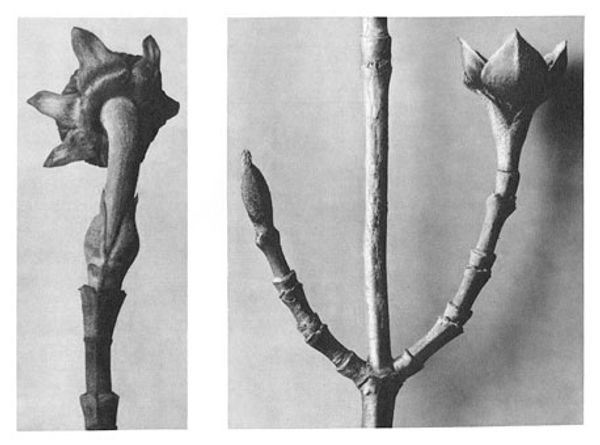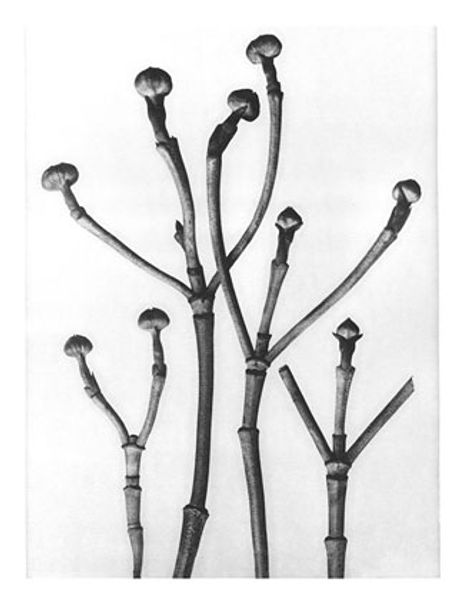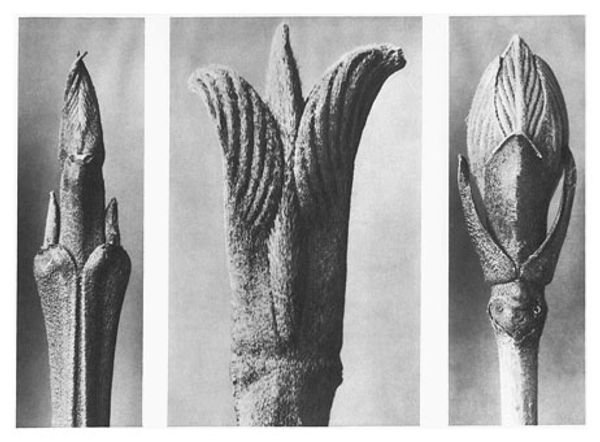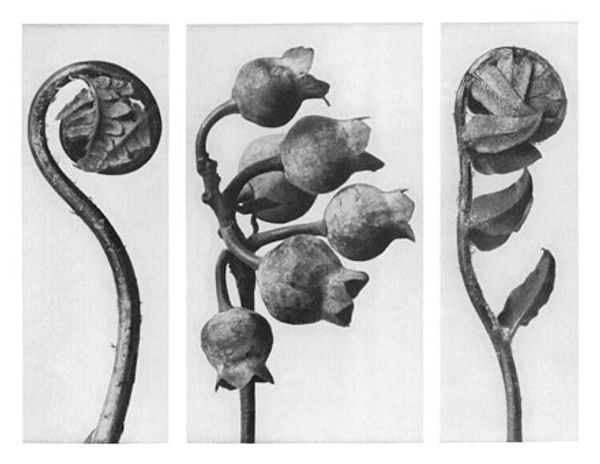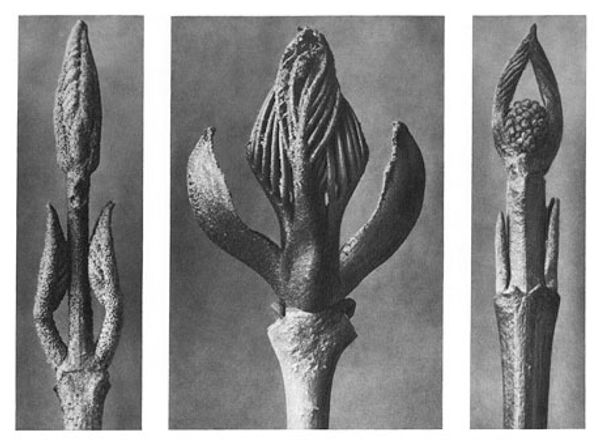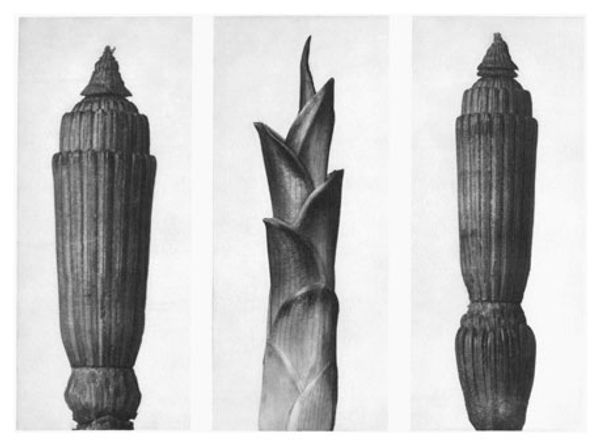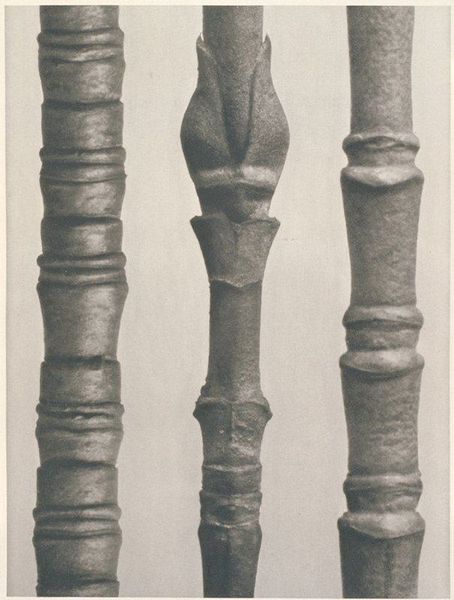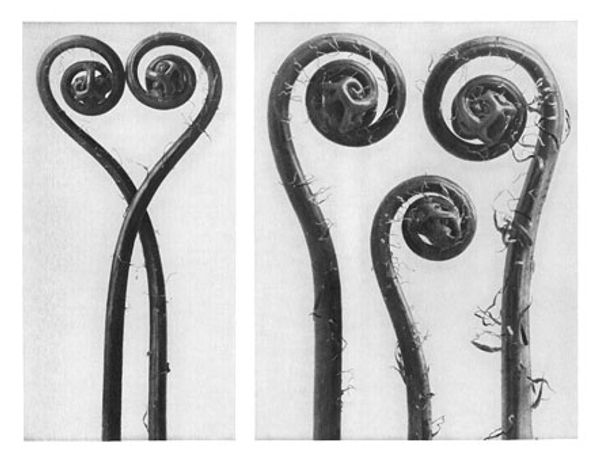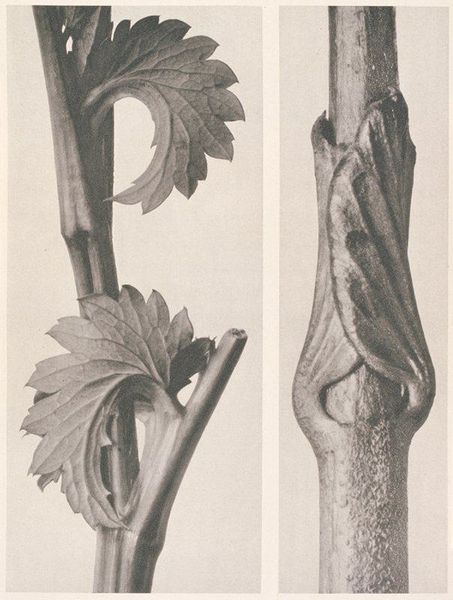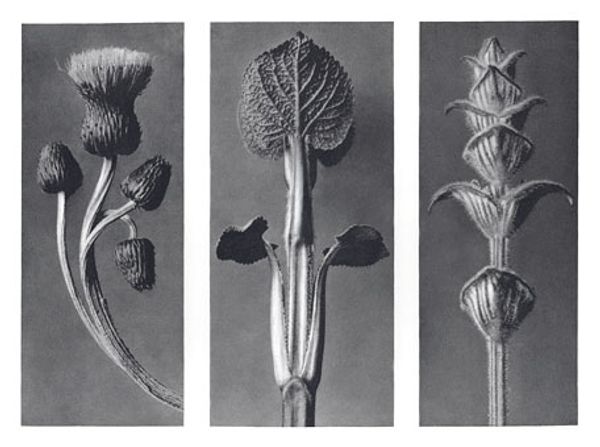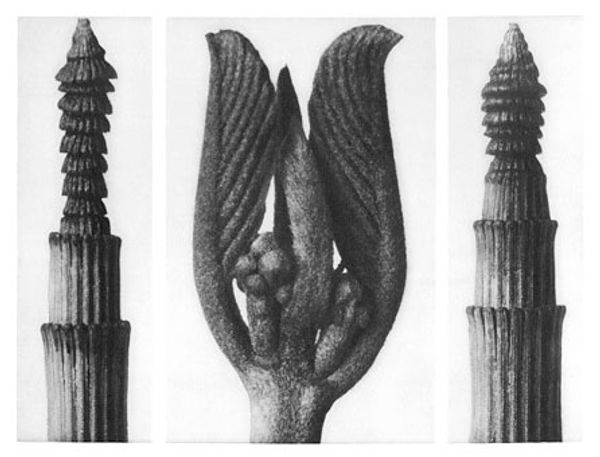
print, photography
# print
#
sculpture
#
textured
#
photography
#
geometric
#
charcoal
#
modernism
Copyright: Public domain
Curator: Welcome. Here we have "Art Forms in Nature 17", a print from Karl Blossfeldt, made around 1928. Editor: Stark! The composition immediately struck me with its bold presentation against that pristine background. The high contrast evokes an almost architectural quality. Curator: Indeed. Blossfeldt's images possess a geometric elegance, a Modernist drive to unearth form, structure, and order within nature's chaos. He aimed to reveal what he called “hidden treasures” of plants through photography. Editor: It is quite the stark contrast between art and documentation, isn't it? The prints force a closer look at plant structures—laboriously produced I would imagine—transformed for consumption. What type of plants are pictured? Curator: We are seeing maple, horse chestnut, and bladdernut branches in their budding stage, photographed with incredible precision to illuminate underlying patterns we usually overlook. The series presents botanical specimens almost like classical architectural ornaments. Editor: Blossfeldt’s direct process is evident. There is limited modification beyond framing, a bold material statement. The choice of isolating and enlarging each twig highlights the innate, sculptural beauty of these organic materials. This simplicity pushes viewers to confront the familiar differently. Curator: He sought to demystify and make art more accessible through everyday, universal imagery, in stark contrast to the elaborate academic botanical illustration of the previous eras. It speaks volumes about his democratic ideals of form, doesn't it? Editor: Yes, in this artistic era obsessed with mechanization, I see an attempt to synthesize the mechanical with the organic. Fascinating! Curator: His photographic method transcends pure reproduction. These images elevate unassuming specimens, reminding us of the deep, encoded symbolic resonance nature carries. Editor: Exactly, through isolating and magnifying nature’s raw material, Blossfeldt forces the viewers to reckon with the relationship of the natural with mass production and mechanical precision. Curator: An intersection of scientific record, the Modernist sensibility and almost hidden sculpture. I’ve always found it speaks quietly, yet boldly about what beauty and discovery mean. Editor: Agreed, and by presenting the materials starkly and artfully, this piece allows a new type of visibility within the art-making tradition, inviting questions about labor, materiality, and artistic value that resonate still.
Comments
No comments
Be the first to comment and join the conversation on the ultimate creative platform.

